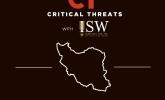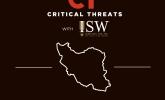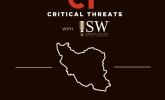Iran Crisis Update, November 3
November 3, 2022 - ISW Press
Violent clashes erupted between security forces and protesters in Karaj, Alborz Province on November 3. Mourners and protesters gathered around Karaj, which is just outside Tehran City, to commemorate the 40th day since the regime killed Hadis Najafi. Security forces blocked roads leading to the cemetery where Najafi is buried and fired live ammunition and tear gas at protesters. Protesters attacked security forces stations and vehicles. Protesters stabbed and killed a Basij member and injured five Law Enforcement Command (LEC) officers. Protesters also severely injured a cleric.








